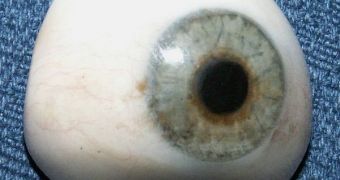One of Canadian documentary filmmaker Rob Spence's eyes was severely damaged in a shooting accident when he was but a young boy, and, unfortunately, doctors had to completely remove the organ just three years ago. But the tragedy didn't set Spence back. He now plans to turn his handicap into an advantage, by installing a digital camera in his empty eye socket. The device would also have batteries and wireless transmitters, and, with it, the filmmaker hopes to raise people's awareness on issues such as public surveillance and the ever-decreasing amount of freedom citizens actually have.
The entire documentary he will shoot after his “spy-eye” is finished will be based on commenting the global spread of miniature cameras, which currently take photos of individuals without their consent not only in public places, such as airports, but also on the street. The increasing use of this technology is regarded by some as an attack to the basic freedoms of people, especially given the fact that the citizens being followed have no idea they are watched, and also don't know what will come of the recordings, once they are made.
His spy-eye will basically consist of a video camera, the kind originally used for colonoscopies, a wireless transmitter, which will send the data to a receiver, as well as a small power source, most likely a battery. The trick is to fit all these components in a device the exact size of his eye socket, which may prove not to be all that difficult. Spence is currently working with OmniVision Inc., a company specialized in miniature cameras for cell phones and medical devices.
Also assisting in the effort is the Massachusetts Institute of Technology (MIT) wearable computers research group co-founder Steve Mann, who is, moreover, a top engineer. Together with OmniVision's staff technical product manager, Zafer Zamboglu, the team will most likely come up with a working prototype soon. The fake prosthesis will be shaped and colored just like Spence's other eye, so that people won't know the difference and act naturally.
The filmmaker hopes to be able to film people's natural reactions, the ones that are usually the first to change when they see a regular camera. Individuals tend not to be themselves around TV cameras, so Spence is hoping to catch a glimpse of how persons really act when confronted with an issue. All the footage that will result from the project will only be used with the express permission of those depicted, even though they will only find out they have been filmed afterwards. The project promises spectacular results, so stay tuned here for more details.

 14 DAY TRIAL //
14 DAY TRIAL //